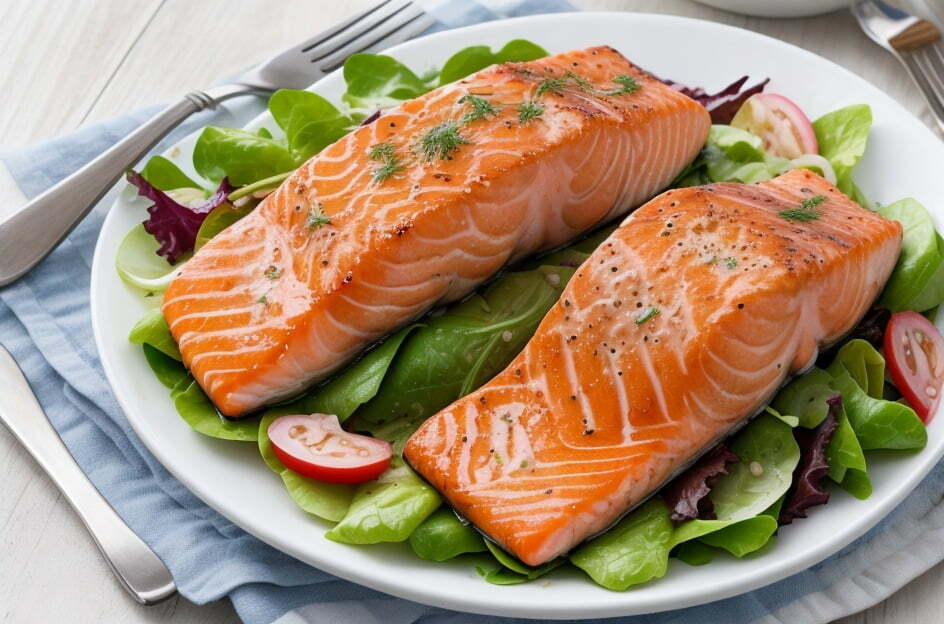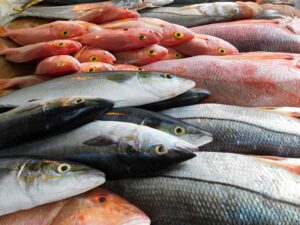Introduction
In the modern culinary world, the air fryer has become a game-changer, revolutionizing the way we cook. Using rapid circulation of hot air, the air fryer heats food, significantly reducing the need for oil while still providing that coveted crispy texture. In health-conscious Norway, the air fryer’s ability to create low-fat, low-calorie dishes has made it increasingly popular.
Why Does the Air Fryer Not Require Oil?
To understand this, let’s first look at the principles behind traditional deep-fried foods.
Why do deep-fried foods have a crispy texture? It’s because before the food is placed in the oil, the oil is heated to a certain high temperature (usually above 150 degrees Celsius). Since food naturally contains moisture, and water’s boiling point is only 100 degrees Celsius, as soon as the food is placed in the oil, the moisture inside rapidly heats up, turning into steam and escaping the food. At this moment, the surface of the food becomes dry due to the loss of moisture. The escaping steam also creates pressure, causing the food’s surface to become puffy or uneven. This is why deep-fried foods turn out crispy.
Now, let’s come back to the topic of the air fryer. Inside an air fryer, a powerful fan generates rapid airflow when the air inside is heated by the heating element. This creates a hot air circulation, ensuring even heating of the food’s surface. The food’s moisture can quickly evaporate due to this high-speed circulation, resulting in a dry outer layer. Does this process sound similar to what I explained about deep frying? In fact, the air fryer simulates the process of deep-frying without the need for oil, creating a crispy outer layer and texture.

Salmon in the Air Fryer
Salmon is one of my favorite foods, so in this article, I’ll introduce how to cook salmon using an air fryer.
Why Choose an Air Fryer for Salmon?
As mentioned earlier, the advantages of the air fryer include its ability to produce low-fat, low-calorie dishes with a crispy texture, striking a balance between deliciousness and healthiness.
So, what happens when salmon meets the air fryer? Salmon is known for its rich nutrients and fats, but not overcooking it is essential for retaining its nutritional value. Generally, the longer the cooking time and higher the temperature, the more unstable the nutritional structure becomes, leading to nutrient loss. The fats in salmon contribute to its rich flavor. Using an air fryer, the high internal temperature allows for shorter cooking times. The rapid circulation of hot air also evaporates the moisture from the salmon, further concentrating its flavor.
Recipe for Salmon in the Air Fryer
Prepare the Ingredients: 5 Marinade Methods for Salmon
Salmon, with its robust flavor, pairs well with both fresh seasonings like lemon juice and herbs, as well as more intense flavors like smoked paprika. Fresh seasonings bring out the salmon’s natural sweetness, while bolder seasonings achieve a balanced layering of flavors, creating a complex and refined taste experience.
Here, I’ll introduce five methods and seasonings for marinating salmon.
Marinade Salmon with Lemon Garlic Sauce
2 salmon fillets (skin-on or skinless)
2 tablespoons olive oil
2 cloves garlic, minced
1 tablespoon fresh lemon juice
1 teaspoon lemon zest
1 teaspoon chopped fresh thyme
1 teaspoon chopped fresh rosemary
Salt and pepper to taste
I absolutely love the fresh lemon aroma combined with the fragrant garlic. The combination creates a zesty and aromatic flavor profile, complemented by a touch of basil, resulting in a sensational taste experience!
Suitable for:
Those who enjoy a tangy and refreshing taste
Spiciness
Sweetness
Freshness

Marinade Salmon with Honey Soy Sauce
2 salmon fillets
3 tablespoons soy sauce
2 tablespoons honey
1 teaspoon grated ginger
1 clove garlic, minced
1 teaspoon sesame seeds (optional)
I find the blend of soy sauce, honey, and ginger perfect, striking a balance between sweetness and a slight kick of spiciness. Each bite carries the gentle sweetness of honey and a subtle hint of heat, complementing the salmon’s texture beautifully.
Suitable for:
Those who prefer a mild sweet and slightly spicy flavor
Spiciness
Sweetness
Freshness
Marinade Salmon with Fruity Brandy
2 salmon fillets
3 tablespoons orange juice
2 tablespoons brandy
1 tablespoon orange zest
1 teaspoon honey
1/2 teaspoon ground cinnamon
A pinch of salt and pepper
The blend of orange juice and brandy creates an invigorating aroma that awakens the senses. The combination of fruity notes and a touch of warmth from honey and cinnamon results in a truly unique flavor profile.
Suitable for:
Those who prefer a gentle mouthfeel
Spiciness
Sweetness
Freshness

Marinade Salmon with Curry Butter
2 salmon fillets
2 tablespoons melted butter
1 teaspoon curry powder
1/2 teaspoon paprika
1/2 teaspoon garlic powder
Salt and pepper to taste
My love for curry knows no bounds, especially when combined with butter, paprika, and garlic powder. The resulting flavor is heartwarming, with the fragrant essence of curry intertwining perfectly with the salmon’s tender texture.
Suitable for:
Those who enjoy a flavorful and spicy taste
Spiciness
Sweetness
Freshness
Marinade Salmon with Sweet and Spicy Peanut Sauce
2 salmon fillets
3 tablespoons peanut butter
1 tablespoon soy sauce
1 tablespoon honey
1 teaspoon chili sauce (adjust according to preference)
1 clove garlic, minced
A splash of lemon juice
My weakness for peanut butter is undeniable, especially when combined with soy sauce, honey, and chili sauce. The combination of sweetness and spiciness is addictive, enhanced by the zesty touch of lemon juice for an adventurous flavor journey.
Suitable for:
Those who seek a balance of sweetness and spiciness
Spiciness
Sweetness
Freshness
These marinade methods and seasonings allow you to explore various taste profiles, enhancing the natural richness of salmon while adding layers of complexity.
Marinating the Salmon
Choose any of the marinade recipes provided above and thoroughly mix the ingredients to create the marinade.
Place the salmon fillets in a shallow dish or a resealable plastic bag. Pour the marinade over the fillets, making sure they are evenly coated. Allow the salmon to marinate for at least 30 minutes to absorb the flavors. I recommend using a sealed bag or wrapping the salmon and marinade in plastic wrap to minimize the aroma escaping into the air and ensuring the marinade’s aroma fully infuses into the salmon.
If the weather is warm, hot, or you wish to marinate for a longer time, it’s advisable to refrigerate the salmon during marination. This helps inhibit bacterial growth. However, I don’t recommend marinating for more than 1 hour, as extended marination might adversely affect the salmon’s cellular structure. Under the influence of the marinade, the fish’s proteins may break down, leading to a less desirable texture, overly soft, and loss of the original taste and consistency.

Cooking the Salmon in the Air Fryer
Preheat the Air Fryer
Preheat the air fryer to 375°F (190°C) for about 5 minutes.
Air Fry the Salmon
Once the salmon is marinated, remove it from the marinade and place it in the air fryer basket. Cook for approximately 8-10 minutes, depending on the thickness of the fillets and your desired doneness. The center of the salmon should be flaky and opaque.
An important note for this step is that you should not put the marinade from the marinated salmon into the air fryer, as it will increase cooking time and overly concentrate the flavors, potentially making the salmon too salty or spicy, overshadowing the salmon’s taste. Therefore, before placing the salmon in the air fryer, make sure to drain the marinade slightly.
Making the Most of the Leftover Marinade
Since the marinade can’t be placed in the air fryer with the salmon, how can you make the most of it without wasting it? Here are three methods:
Method 1: As a Condiment Sause
Add a little water to the marinade, reheat until boiling, season with salt and black pepper to taste, and drizzle it over the cooked salmon as a condiment.
Method 2: Glazing
As your salmon’s cooking time nears completion, brush a thin layer of the marinade on top and continue cooking for a few minutes until the glaze caramelizes, creating an appealing glossy finish, enhancing flavor and appearance.
Method 3: For Accompaniments
Add a bit of water to the marinade, reheat to boiling, then let it cool. Add a dash of olive oil, salt, black pepper, and lemon juice. Drizzle this over salads or pasta, using the marinade as a dressing, which pairs wonderfully with air-fried salmon.
Decorating and Enjoying

For an extra burst of freshness, you can add extra lemon zest and a little chopped herb, such as dill, which complements salmon wonderfully. Then pair this delicious dish with your favorite sides, such as quinoa, rice, French fries, pasta, or a simple salad. If you want to indulge, pair the salmon with creamy avocado salsa – a match made in culinary heaven.
Pairing Wine with Air Fryer Salmon
Lemon Garlic Sauce Salmon: White wine such as Riesling or Sauvignon Blanc
The tangy freshness of lemon pairs well with the crispness of white wines like Riesling or Sauvignon Blanc, creating a light and flavorful experience.
Honey Soy Sauce Salmon: Beer such as Light Ale or Wheat Beer
The mild sweetness of honey and soy sauce balances nicely with the refreshing character of light ales or wheat beers, creating a harmonious combination.
Fruity Brandy Sauce Salmon: Brandy, such as Dry Cognac
The fruity notes of brandy complement the orange juice and zest in the sauce, enhancing the layers of taste.
Curry Butter Sauce Salmon: Bold red wine such as Cabernet Sauvignon
The spicy kick of curry pairs well with the rich texture and tannins of bold red wines, creating a deep and satisfying culinary experience.
Sweet and Spicy Peanut Sauce Salmon: Beer such as Amber Ale or Pale Ale
The robust sweet and spicy profile of the peanut sauce contrasts with the maltiness of amber or pale ales, enhancing the complexity of flavors.
Tips for Cooking Salmon in the Air Fryer
Cooking times may vary based on the model and size of the air fryer, as well as the thickness of the salmon fillets. It’s advisable to closely monitor the cooking process. Overcooking should be avoided – keep an eye on your fillets to prevent them from becoming dry. On the other hand, undercooked salmon might pose health risks.
You can customize marinades and herbs according to your preferences. Dill, parsley, and tarragon are excellent herb choices for salmon.
Avoid overcrowding the air fryer basket to ensure proper airflow and even cooking.
Frequently Asked Questions (FAQ) about Air Fryer Salmon
Q1: Can I reheat salmon using an air fryer?
A1: Absolutely! To reheat salmon, preheat the air fryer to 350°F (175°C), place the leftover salmon in the basket, and reheat for 3-4 minutes until heated through.
Q2: Can I adjust the recipe for larger salmon fillets?
A2: Certainly. For larger fillets, slightly adjust the cooking time to ensure the internal temperature reaches a safe 145°F (63°C) doneness.
Q3: Is air-fried salmon healthier compared to other cooking methods?
A3: Yes, air-fried salmon is considered healthier than deep frying or pan-frying since it requires minimal oil. It retains nutrients and reduces excessive fat intake.
Q4: How can I prevent salmon from sticking to the air fryer basket?
A4: To prevent sticking, lightly brush oil onto the air fryer basket or use parchment paper. This ensures easy removal without compromising the crispy texture.















